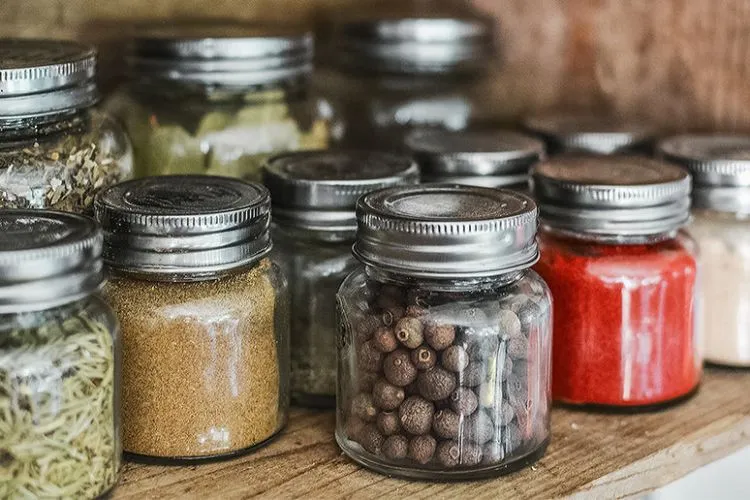Storing food efficiently and effectively can be a challenge. One little-known but highly potent substance used for superior food storage is Diatomaceous Earth (DE).
Contrary to popular assumptions, DE exhibits impressive antimicrobial properties that minimize spoilage and extend shelf-life.
But, how to use diatomaceous earth for food storage?
This article delivers a comprehensive understanding of how DE can be leveraged for food storage, shedding light on its intricate nature, practical application, benefits, and precautions to ensure your food remains nutritious and fresh for longer.

Delve into the world of DE and revolutionize your food preservation techniques with this natural wonder.
how to use diatomaceous earth for food storage?
Diatomaceous Earth (DE), made from fossilized aquatic organisms called diatoms, is a powerful tool for storing foodstuff like grains, legumes, and flour. It acts as a natural preservative and pest deterrent.
Let’s learn how to use it step-by-step.
Understanding DE
Diatomaceous Earth (DE) is a unique, naturally occurring sediment primarily composed of the fossilized remains of diatoms, a type of microscopic algae.
Although DE has various grades and applications (such as for pool filtration, pet care, and gardening), it is crucial to highlight the importance of using Food Grade DE for food storage.

Food Grade DE is a specially refined type of DE that is deemed safe for human consumption by regulatory agencies, such as the United States FDA.
It’s free from harmful impurities and has been processed in a way that preserves its antimicrobial and pest-deterring properties without posing any risk to those who will consume the food treated with it.
Non-food grade DE, however, may contain contaminants or be more abrasive, which can be harmful when in contact with food.
This distinction is essential to consider when you embark on using DE for food storage, as using the incorrect grade might compromise the safety and quality of your stored food.
To be absolutely certain that you’re using the safest and most effective DE for your food, always verify its label or packaging and ensure that it specifically indicates that it is Food Grade DE.
Remember, the distinction between the different types of DE lies in their processing and purity, making it critical to choose the right one for your food storage needs.
Purchasing DE
DE can be purchased online or in some specialist gardening or natural food stores. Remember, always buy food grade DE for this purpose.
Preparing Your Food
When preparing to incorporate Diatomaceous Earth (DE) into your food storage routine, it’s crucial to carefully examine and prepare your food.
Before you can start the actual process of storing food with DE, it is essential to collect all the food you plan to store in one place. This will help streamline the process, eliminate confusion, and achieve optimal effectiveness.

The food you plan to store should be dry and clean. It’s necessary to ensure that the food is free from surface moisture as DE works optimally in dry conditions.
Moreover, the presence of moisture can compromise DE’s effectiveness and encourage the growth of mold and bacteria on your food, thereby reducing its shelf life.
Inspect the food carefully for any signs of damage or infestation. Presence of pests, holes, mold, or rot should be checked thoroughly. Any sign of damage or infestation may suggest that the food is not fit for storage as it will likely worsen over time, even with the protection of DE.
This preparation stage is vital because DE is not a remedy for rot or infestation – it’s a preventative measure. Additionally, DE won’t mend damaged food items, and storing food that’s already infested can affect the quality and cleanliness of the rest of the stored food.
Proper preparation ensures that the DE can work most effectively in preserving the quality of your food over an extended period. It paves the way for successful long-term food storage, emphasizing the importance of proper sanitation and inspection prior to storing food with DE.
Calculating DE Amount
When using Diatomaceous Earth (DE) for food storage, it is essential to use the correct amount to ensure its effectiveness in preserving the quality of your food. The general rule for incorporating DE into your food storage is roughly 1 teaspoon of DE for every pound of food.
However, for long-term storage of dry foods in dark places, it is recommended to use 1 ½ teaspoons to 2 teaspoons of DE per pound of food. If you are storing larger amounts, the guideline is to use 1 cup of DE for every 50 pounds of dry food.
These ratios aim to provide optimal coverage of DE on the food, preventing mold and deterring pests without overusing or underusing the DE. Using the right amount ensures that DE maintains its effectiveness to keep your food fresh and safe for consumption over an extended period.
It is crucial to adapt the amount of DE accordingly if you are working with smaller amounts of food, ensuring that neither too little nor too much DE is applied. By following these guidelines, you can achieve the perfect balance to efficiently preserve your stored food.
Mixing DE with Food
The process of mixing DE with your food ensures the substance is evenly distributed, maximizing its effectiveness. Although the process sounds simple, it requires care and attention. Below is the expanded explanation and a step-by-step guide on how to mix DE with your food:
- Choose the Right Container: Use a large, clean container that allows enough room for your food and DE, as well as the necessary space for mixing. Make sure this container is dry, as moisture can hinder the effectiveness of DE.
- First Layer of Food: Place a portion of your food in the container. This should only be a part of your total food to be stored, as we will be adding and mixing in layers.
- Sprinkle DE: Sprinkle a layer of DE over the food in the container. Ensure it’s spread evenly over the entire surface, without clumps. Remember, you’re aiming to use roughly 1-2 teaspoons of DE per pound of food for optimal coverage.
- Add Additional Layers: Add another layer of food over the first layer sprinkled with DE. Follow this with another even application of DE.
- Repeat: Keep repeating this process — food, then DE, then food, and so forth — until all your food is in the container and thinly layered with DE.
- Mix Well: The final and important step is to mix everything together. Stir the layers of food and DE using a clean and dry utensil until every bit of the food seems to be lightly coated with DE. This step ensures the distribution of DE throughout the food.
Remember, DE can cause irritation if inhaled, so be careful not to stir too aggressively, which could cause the DE to become airborne. Use a mask if necessary to avoid inhalation.
Storing DE Treated Food
Empty your DE and food mix into the storage container. Seal the container tightly, ensuring there’s no room for air or bugs to get inside. Label the container with the name and date. For best results, store the container in a cool, dry, dark place away from heat and moisture.
Using D-Earth Treated Food
Here’s the best part – you don’t need to rinse your food before use! DE is safe to consume in the small amounts that adhere to your stored food.
What are the precautions when using diatomaceous earth?
Diatomaceous Earth (DE) is a natural and effective substance for various uses including pest control and food preservation. While it is generally recognized as safe for humans and pets, there are still precautions to ensure its effective and safe usage.

Use Food-Grade DE
There are several grades of DE available, but for purposes involving direct or indirect ingestion such as food storage and consumption, always ensure to use food-grade DE. This type of DE has been processed in a way that it’s safe for consumption.
Non-food grade DE, often used for pool filtration, may contain harmful contaminants and should be avoided for food-related uses.
Avoid Inhalation
While DE is not toxic, it is a very fine powder and can easily become airborne. If inhaled, it can irritate the nasal passages and lungs. When handling DE, especially during the application process, it’s recommended to wear a dust mask or other protective face covering to prevent inhalation.
Prevent Eye Contact
As DE is a form of silica, it can cause eye irritation if contact occurs. It’s a good practice to wear protective eyewear when applying DE, especially in conditions where it might become airborne.
Use in Well-Ventilated Area
When mixing and applying DE, it’s best to do so in a well-ventilated area. This reduces the risk of inhaling the fine particles and helps protect your respiratory system.
Handle with Dry Hands
DE works best in dry conditions. Hence, it’s advisable to handle DE with dry hands and tools to prevent any clumping or reduced efficacy.
Keep out of Children’s Reach
While DE is non-toxic, it should be stored safely, out of the reach of children to prevent unsupervised contact or ingestion.
Proper Disposal
Dispose of any remaining DE responsibly. While it poses no significant risk to the environment, large volumes should not be washed down the drain as it may lead to blockages.
In conclusion, while DE is a practical and safe substance to use for preserving food, always handle it with care. The proper precautions not only ensure its effective use but also secure the safety of the user and the environment.
Conclusion:
Using Diatomaceous Earth (DE) for food storage is a natural and economical way to preserve the quality and longevity of your food supply. It is important to remember that only food-grade DE is suitable for this purpose.
The process calls for careful preparation of your food, correct calculation of the DE amount, and a methodical approach to mixing it with your food.
With safety precautions observed, DE can be a powerful adjunct to your food preservation strategies, offering peace of mind as it works to deter pests and improves your food’s shelf-life.
With these methods, you can harness the protective qualities of DE to deliver viable, long-term food storage at home.


